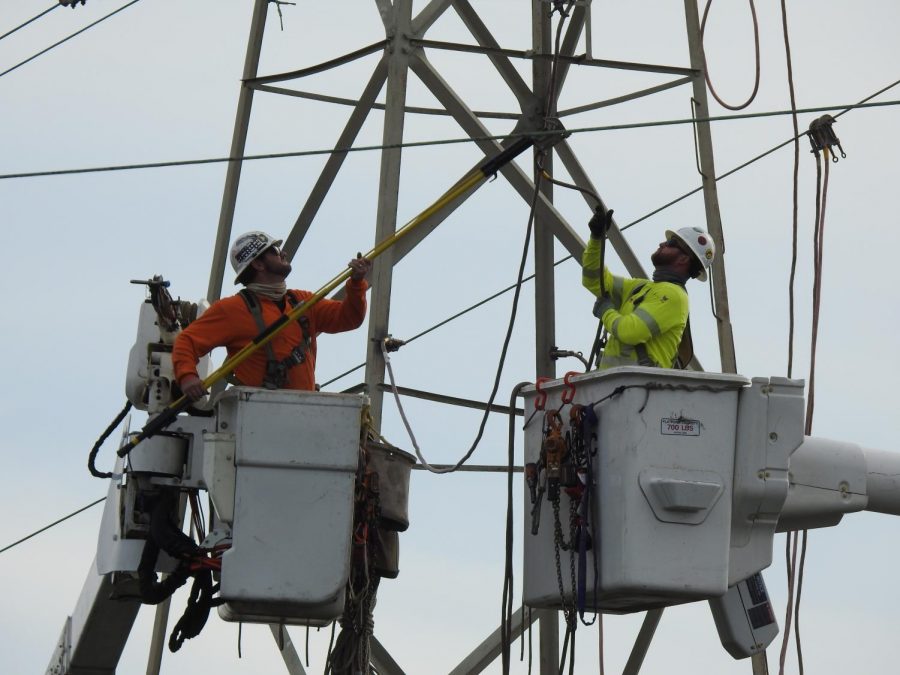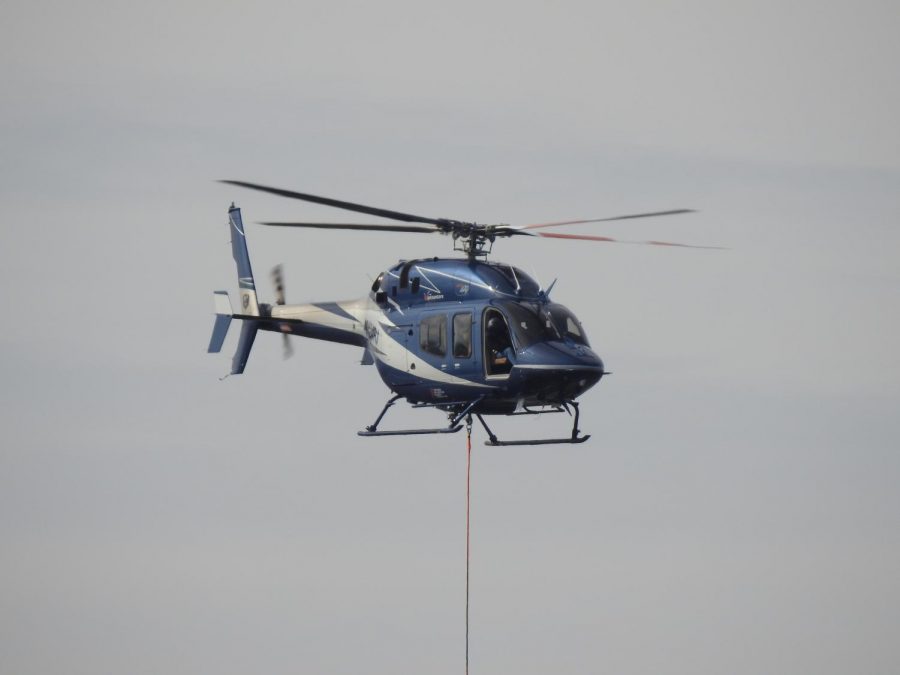Over the past several months, the Pacific Gas and Electric Company (PG&E) has been performing maintenance work on the Redwood Shores Levee powerlines, employing several teams of construction workers, multiple drones, and helicopters.
Leading up to the new year, the company sent only a few workers to check the towers’ functionality, mainly relying on drones to survey the lines and report any problems. However, as the necessity for manual alterations increased, PG&E sent a larger team of employees and a helicopter on site.
Junior Seona Sherman is a Redwood Shores resident who was able to observe the worker’s progress.
“There was this one time I saw a few workers using a drone to check the top of a power line, and I think they were checking to see if the power lines were secure or functioning properly,” Sherman said.
On Jan. 7, PG&E employed a helicopter to help transport workers and service materials to the tops of electrical towers. Using a long harness attached to the helicopter’s base, construction workers would clip-on, fly over the neighborhoods, and be dropped off at a powerline for maintenance work.
“The primary purpose of the helicopters is to help PG&E do day-to-day work in remote and hard-to-reach places across its 70,000-square mile service area. In addition to supporting utility work, PG&E can defer its use to make [them] available for first responder use, if needed and requested, during wildfire events,” read a PG&E statement about the addition of helicopters to their company.
By Friday of last week, the construction workers succeeded in building a brand new service platform underneath the electricity towers, making it easier to modify the power lines in the future.
Their work was done efficiently and was primarily made possible by the assistance of manned and unmanned aerial vehicles.
THE USAGE OF DRONE TECHNOLOGY
Unmanned aerial vehicles (UAV), or drones, have been used by PG&E in the Bay Area since 2016 when the first test flights occurred over the Balch Powerhouse, a hydroelectric facility outside Fresno.
According to an announcement released by PG&E, the test flights demonstrated that “drones can easily fly over remote or hard-to-reach terrain that is often inaccessible on foot, and send back imagery showing the condition of electric lines and equipment.”
They also noted that the utilization of drone technology has “significant possibilities not just for employee and public safety, but for increasing reliability of our service and response time to outages.”
Aside from these benefits, UAVs have a wide range of other uses that can be harnessed by companies and residents.
“I now use drones as a hobby to take aerial photography and videography when we go camping. I believe that drones are a real game-changer because they are super easy to fly, and the chance of crashing is extremely low,” drone operator David Coleman said.
Besides hobbyist use, the existence and successes of drone technology have made them very desirable for many different fields. Their seemingly limitless range and reliable controls could provide a new line of support for various causes.
“I definitely think that drones have potential, and some of their uses that can benefit society are when, in the future, they can take over some jobs like delivery or help nature recover after a disaster,” freshman Rintaro Sato said.
The Benefits of Using Drones by Maya Kornyeyeva
Regarding the issue of the global pandemic, UAVs could prove to be useful assets.
“There is a big possibility that drones can be used to transport COVID-19 vaccines to rural and distant areas, reducing the risk of exposure. Drones can also be used for transporting medicines and therapeutics to infected patients at their homes,” Coleman said.
However, as drone technology becomes more widespread and accessible, there are bound to be those who use it for criminal purposes. In response to this possibility, local and federal governments have imposed airspace restrictions to better regulate drone usage.
Specifically, the Federal Aviation Administration (FAA) sets the rules of who can and cannot fly in a specific zone. They label these areas as ‘no-fly zones.’
“A ‘no-fly’ zone is a geographic zone where the drone software will not let you fly due to proximity to airports or air traffic and include areas that have sensitive governmental buildings. There are more and more of these zones across the country, making it harder to fly without permission of the FAA,” Coleman said.
With that in mind, PG&E has so far been successful in using drone technology for electrical tower maintenance and are sure to apply drones in a multitude of other projects moving forward.























